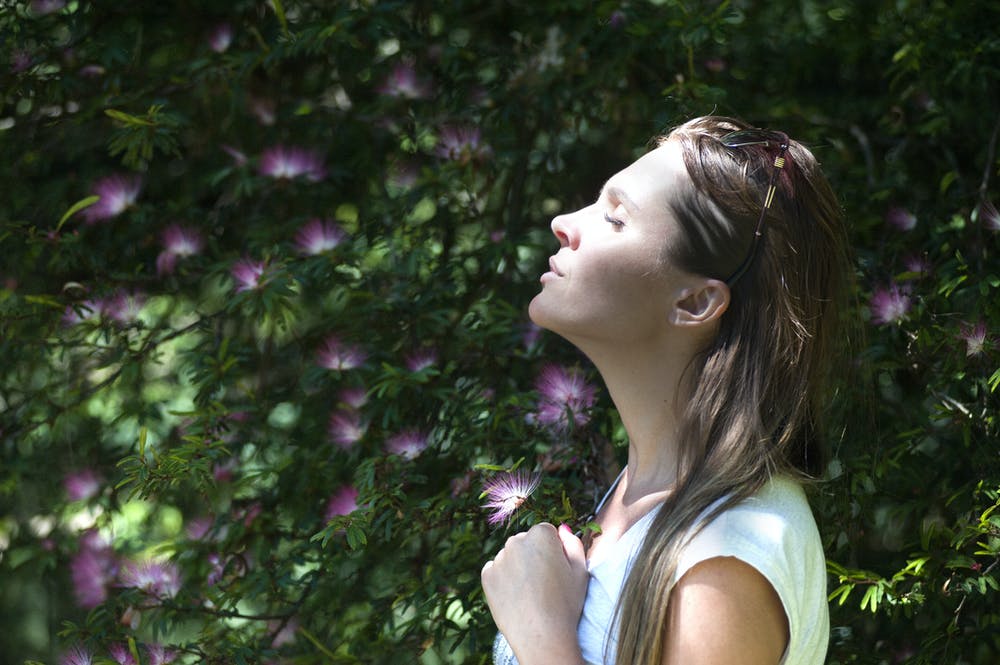Ah, spring is just around the corner, and with that comes being outdoors again. And who doesn’t love being outside in the sunshine, breathing in the fresh air, and stretching out? However, spending time outside also requires being smart about skin protection and being prepared. Protecting your health and your skin from the adverse effects of being outdoors is simpler than you may think. There are proactive and preventative ways to protect your skin from appearing older, drier, and less youthful.
The most significant risk of being outdoors is overexposure, especially sun exposure. However, even the smallest amount of sunlight can have some lasting ramifications, so protecting yourself from harmful sunlight is essential.
There are two types of sunlight, UVA and UVB. UVA stands for Ultraviolet A and is a longer, wider wavelength of sunlight that is associated with skin aging. UVB stands for Ultraviolet B and is a shorter, more intense type of sunlight associated with skin burning. While both types of UV light vary from one another, they are both associated with harm to the skin and internal organs that can lead to DNA changes, mutations, premature aging, and even some cancers.
Additionally, too much sun exposure can damage the eyes, causing cataracts and some eye cancers. To help you avoid the dangers of sun exposure, so that you can spend more time outdoors, here are some suggestions to guide you.
Sunscreen
As mentioned, sun exposure, even for a short period of time, can have damaging effects on the skin and body. Applying sunscreen before exposure and limiting time with direct exposure is the best practice. Reapply sunscreen every two hours or less when becoming sweaty or wet.
There are 5-significant ways that sunscreen helps the body. These five tips are known as the 5 W’s, short for:
- Who: Everyone spending time outdoors in sunlight should wear sunscreen.
- What: SPF-15 for quick daytime exposure and SPF-30 for longer durations.
- When: 30 minutes prior to being exposed, and then reapply every 2 hours.
- Where: On all exposed skin, including your face, head, and neck.
- How: One ounce over the entire exposed portion of your body, per application.
Sunscreen’s efficacy is defined by its SPF rating, or “sun protection factor.” It is a number that normally starts around 15, and is the amount of protection from exposure to UV light that you can expect while wearing sunscreen. The higher the number, the better protection you will experience.
Clothing
Wear loose-fitting clothing that completely covers the legs, arms, and neck of your body. A wide-brimmed hat is also recommended to protect the head and neck from sunlight. Shoes should be closed-toed, comfortable, yet snug as you wear them. Socks are crucial if you plan on anything more than casual walking, such as hiking or running. Your feet will move around constantly in the shoes during these strenuous activities, causing friction and potentially creating blisters as a result.
Shade
Finding shade outside, especially when you plan to be out for a long time, is crucial. If you can’t find adequate natural shading or plan on having multiple people share the shaded space, consider a 10×10 pop-up canopy that is easy to erect and take down.
The benefits of shade are that it will protect you from direct sunlight and give you a place to relax, make food or drinks, and just be able to enjoy the outdoors for a longer time than sitting in direct exposure to the sun. A pop-up is a great way to spend a day at the park, beach, lake, or wherever and have a relaxing time without the worry of being over-exposed to the sun.
Water
Finally, drinking a lot of water is crucial! Water serves several vital functions for the body, including appetite control, weight management, digestion, and more. Also, it will help your skin maintain its youthful elasticity while also providing the body with the ability to regulate temperatures properly.
Protecting yourself and your skin is easier than you think, especially as temperatures warm up and you spend more time outdoors. Wearing the correct type of clothes, hats, and shoes, applying sunscreen as directed, having adequate amounts of shade, and drinking plenty of water are all the best strategies to protect your health and skin.

